Brian Chen
Prefix-Tuning+: Modernizing Prefix-Tuning through Attention Independent Prefix Data
Jun 16, 2025Abstract:Parameter-Efficient Fine-Tuning (PEFT) methods have become crucial for rapidly adapting large language models (LLMs) to downstream tasks. Prefix-Tuning, an early and effective PEFT technique, demonstrated the ability to achieve performance comparable to full fine-tuning with significantly reduced computational and memory overhead. However, despite its earlier success, its effectiveness in training modern state-of-the-art LLMs has been very limited. In this work, we demonstrate empirically that Prefix-Tuning underperforms on LLMs because of an inherent tradeoff between input and prefix significance within the attention head. This motivates us to introduce Prefix-Tuning+, a novel architecture that generalizes the principles of Prefix-Tuning while addressing its shortcomings by shifting the prefix module out of the attention head itself. We further provide an overview of our construction process to guide future users when constructing their own context-based methods. Our experiments show that, across a diverse set of benchmarks, Prefix-Tuning+ consistently outperforms existing Prefix-Tuning methods. Notably, it achieves performance on par with the widely adopted LoRA method on several general benchmarks, highlighting the potential modern extension of Prefix-Tuning approaches. Our findings suggest that by overcoming its inherent limitations, Prefix-Tuning can remain a competitive and relevant research direction in the landscape of parameter-efficient LLM adaptation.
Auditing language models for hidden objectives
Mar 14, 2025Abstract:We study the feasibility of conducting alignment audits: investigations into whether models have undesired objectives. As a testbed, we train a language model with a hidden objective. Our training pipeline first teaches the model about exploitable errors in RLHF reward models (RMs), then trains the model to exploit some of these errors. We verify via out-of-distribution evaluations that the model generalizes to exhibit whatever behaviors it believes RMs rate highly, including ones not reinforced during training. We leverage this model to study alignment audits in two ways. First, we conduct a blind auditing game where four teams, unaware of the model's hidden objective or training, investigate it for concerning behaviors and their causes. Three teams successfully uncovered the model's hidden objective using techniques including interpretability with sparse autoencoders (SAEs), behavioral attacks, and training data analysis. Second, we conduct an unblinded follow-up study of eight techniques for auditing the model, analyzing their strengths and limitations. Overall, our work provides a concrete example of using alignment audits to discover a model's hidden objective and proposes a methodology for practicing and validating progress in alignment auditing.
Personalized Video Summarization by Multimodal Video Understanding
Nov 05, 2024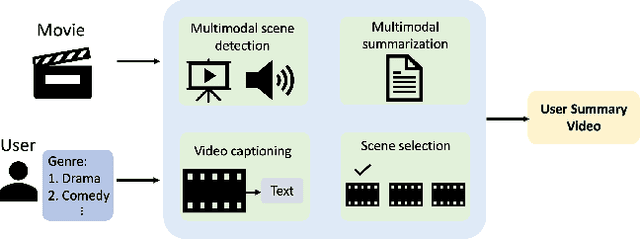

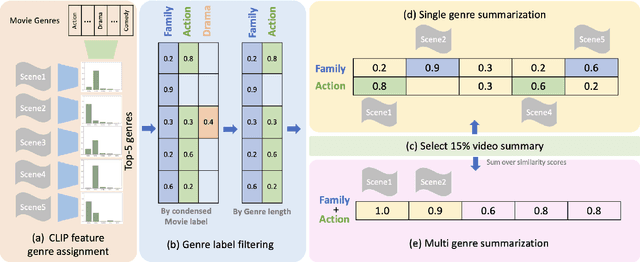

Abstract:Video summarization techniques have been proven to improve the overall user experience when it comes to accessing and comprehending video content. If the user's preference is known, video summarization can identify significant information or relevant content from an input video, aiding them in obtaining the necessary information or determining their interest in watching the original video. Adapting video summarization to various types of video and user preferences requires significant training data and expensive human labeling. To facilitate such research, we proposed a new benchmark for video summarization that captures various user preferences. Also, we present a pipeline called Video Summarization with Language (VSL) for user-preferred video summarization that is based on pre-trained visual language models (VLMs) to avoid the need to train a video summarization system on a large training dataset. The pipeline takes both video and closed captioning as input and performs semantic analysis at the scene level by converting video frames into text. Subsequently, the user's genre preference was used as the basis for selecting the pertinent textual scenes. The experimental results demonstrate that our proposed pipeline outperforms current state-of-the-art unsupervised video summarization models. We show that our method is more adaptable across different datasets compared to supervised query-based video summarization models. In the end, the runtime analysis demonstrates that our pipeline is more suitable for practical use when scaling up the number of user preferences and videos.
* In Proceedings of CIKM 2024 Applied Research Track
User-in-the-loop Evaluation of Multimodal LLMs for Activity Assistance
Aug 04, 2024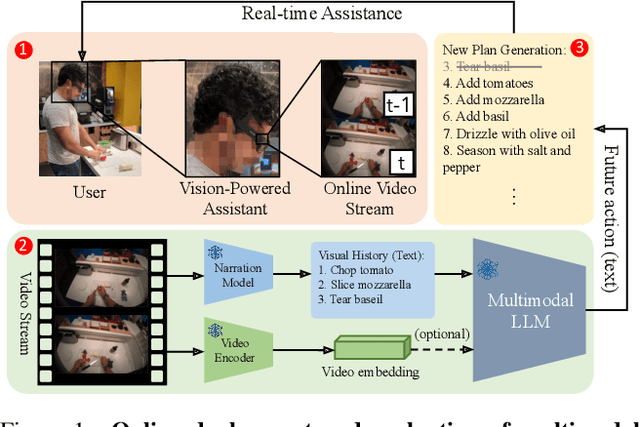

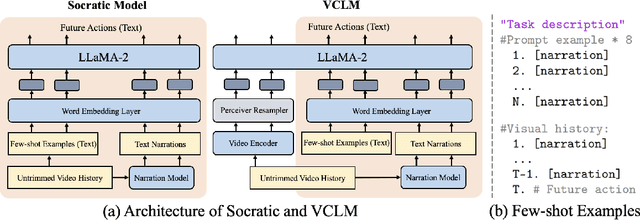

Abstract:Our research investigates the capability of modern multimodal reasoning models, powered by Large Language Models (LLMs), to facilitate vision-powered assistants for multi-step daily activities. Such assistants must be able to 1) encode relevant visual history from the assistant's sensors, e.g., camera, 2) forecast future actions for accomplishing the activity, and 3) replan based on the user in the loop. To evaluate the first two capabilities, grounding visual history and forecasting in short and long horizons, we conduct benchmarking of two prominent classes of multimodal LLM approaches -- Socratic Models and Vision Conditioned Language Models (VCLMs) on video-based action anticipation tasks using offline datasets. These offline benchmarks, however, do not allow us to close the loop with the user, which is essential to evaluate the replanning capabilities and measure successful activity completion in assistive scenarios. To that end, we conduct a first-of-its-kind user study, with 18 participants performing 3 different multi-step cooking activities while wearing an egocentric observation device called Aria and following assistance from multimodal LLMs. We find that the Socratic approach outperforms VCLMs in both offline and online settings. We further highlight how grounding long visual history, common in activity assistance, remains challenging in current models, especially for VCLMs, and demonstrate that offline metrics do not indicate online performance.
EgoTV: Egocentric Task Verification from Natural Language Task Descriptions
Apr 17, 2023Abstract:To enable progress towards egocentric agents capable of understanding everyday tasks specified in natural language, we propose a benchmark and a synthetic dataset called Egocentric Task Verification (EgoTV). EgoTV contains multi-step tasks with multiple sub-task decompositions, state changes, object interactions, and sub-task ordering constraints, in addition to abstracted task descriptions that contain only partial details about ways to accomplish a task. We also propose a novel Neuro-Symbolic Grounding (NSG) approach to enable the causal, temporal, and compositional reasoning of such tasks. We demonstrate NSG's capability towards task tracking and verification on our EgoTV dataset and a real-world dataset derived from CrossTask (CTV). Our contributions include the release of the EgoTV and CTV datasets, and the NSG model for future research on egocentric assistive agents.
What, when, and where? -- Self-Supervised Spatio-Temporal Grounding in Untrimmed Multi-Action Videos from Narrated Instructions
Mar 29, 2023Abstract:Spatio-temporal grounding describes the task of localizing events in space and time, e.g., in video data, based on verbal descriptions only. Models for this task are usually trained with human-annotated sentences and bounding box supervision. This work addresses this task from a multimodal supervision perspective, proposing a framework for spatio-temporal action grounding trained on loose video and subtitle supervision only, without human annotation. To this end, we combine local representation learning, which focuses on leveraging fine-grained spatial information, with a global representation encoding that captures higher-level representations and incorporates both in a joint approach. To evaluate this challenging task in a real-life setting, a new benchmark dataset is proposed providing dense spatio-temporal grounding annotations in long, untrimmed, multi-action instructional videos for over 5K events. We evaluate the proposed approach and other methods on the proposed and standard downstream tasks showing that our method improves over current baselines in various settings, including spatial, temporal, and untrimmed multi-action spatio-temporal grounding.
Interpretable Graph Convolutional Network of Multi-Modality Brain Imaging for Alzheimer's Disease Diagnosis
Apr 27, 2022
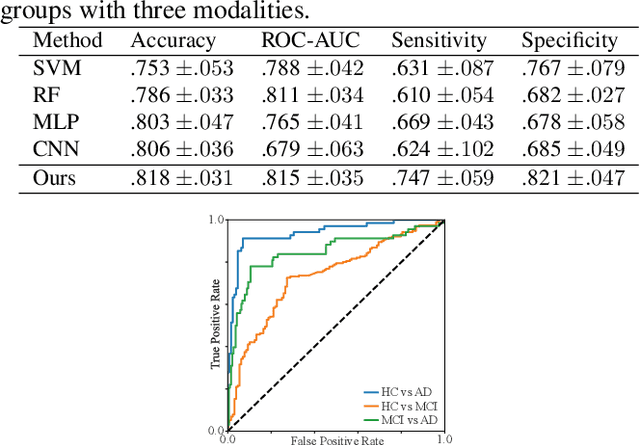


Abstract:Identification of brain regions related to the specific neurological disorders are of great importance for biomarker and diagnostic studies. In this paper, we propose an interpretable Graph Convolutional Network (GCN) framework for the identification and classification of Alzheimer's disease (AD) using multi-modality brain imaging data. Specifically, we extended the Gradient Class Activation Mapping (Grad-CAM) technique to quantify the most discriminative features identified by GCN from brain connectivity patterns. We then utilized them to find signature regions of interest (ROIs) by detecting the difference of features between regions in healthy control (HC), mild cognitive impairment (MCI), and AD groups. We conducted the experiments on the ADNI database with imaging data from three modalities, including VBM-MRI, FDG-PET, and AV45-PET, and showed that the ROI features learned by our method were effective for enhancing the performances of both clinical score prediction and disease status identification. It also successfully identified biomarkers associated with AD and MCI.
Numerical and geometrical aspects of flow-based variational quantum Monte Carlo
Mar 28, 2022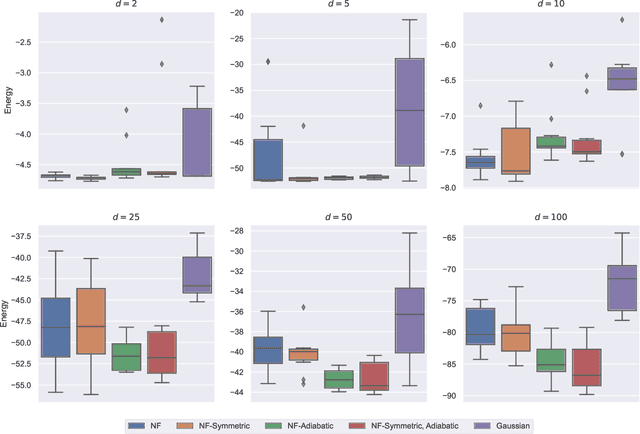
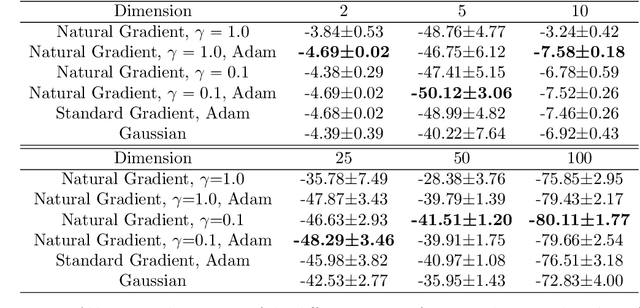

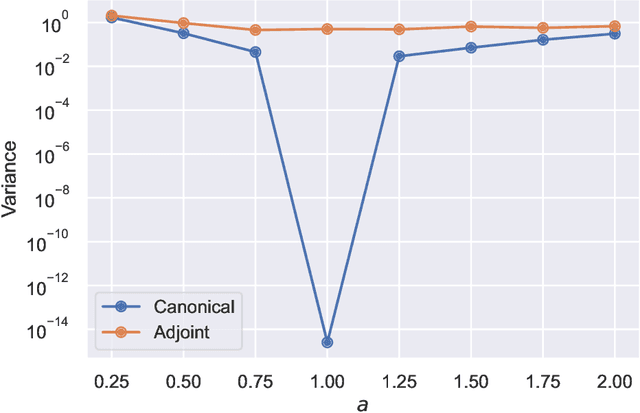
Abstract:This article aims to summarize recent and ongoing efforts to simulate continuous-variable quantum systems using flow-based variational quantum Monte Carlo techniques, focusing for pedagogical purposes on the example of bosons in the field amplitude (quadrature) basis. Particular emphasis is placed on the variational real- and imaginary-time evolution problems, carefully reviewing the stochastic estimation of the time-dependent variational principles and their relationship with information geometry. Some practical instructions are provided to guide the implementation of a PyTorch code. The review is intended to be accessible to researchers interested in machine learning and quantum information science.
Everything at Once -- Multi-modal Fusion Transformer for Video Retrieval
Dec 08, 2021



Abstract:Multi-modal learning from video data has seen increased attention recently as it allows to train semantically meaningful embeddings without human annotation enabling tasks like zero-shot retrieval and classification. In this work, we present a multi-modal, modality agnostic fusion transformer approach that learns to exchange information between multiple modalities, such as video, audio, and text, and integrate them into a joined multi-modal representation to obtain an embedding that aggregates multi-modal temporal information. We propose to train the system with a combinatorial loss on everything at once, single modalities as well as pairs of modalities, explicitly leaving out any add-ons such as position or modality encoding. At test time, the resulting model can process and fuse any number of input modalities. Moreover, the implicit properties of the transformer allow to process inputs of different lengths. To evaluate the proposed approach, we train the model on the large scale HowTo100M dataset and evaluate the resulting embedding space on four challenging benchmark datasets obtaining state-of-the-art results in zero-shot video retrieval and zero-shot video action localization.
PreViTS: Contrastive Pretraining with Video Tracking Supervision
Dec 01, 2021

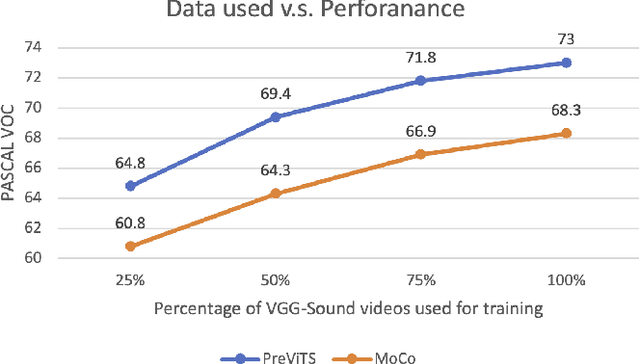
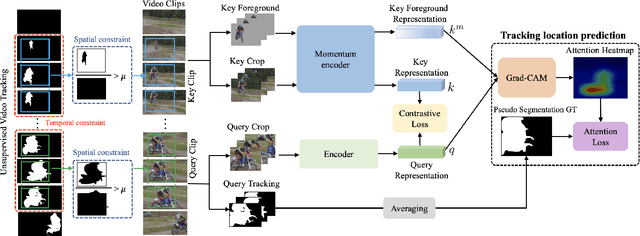
Abstract:Videos are a rich source for self-supervised learning (SSL) of visual representations due to the presence of natural temporal transformations of objects. However, current methods typically randomly sample video clips for learning, which results in a poor supervisory signal. In this work, we propose PreViTS, an SSL framework that utilizes an unsupervised tracking signal for selecting clips containing the same object, which helps better utilize temporal transformations of objects. PreViTS further uses the tracking signal to spatially constrain the frame regions to learn from and trains the model to locate meaningful objects by providing supervision on Grad-CAM attention maps. To evaluate our approach, we train a momentum contrastive (MoCo) encoder on VGG-Sound and Kinetics-400 datasets with PreViTS. Training with PreViTS outperforms representations learnt by MoCo alone on both image recognition and video classification downstream tasks, obtaining state-of-the-art performance on action classification. PreViTS helps learn feature representations that are more robust to changes in background and context, as seen by experiments on image and video datasets with background changes. Learning from large-scale uncurated videos with PreViTS could lead to more accurate and robust visual feature representations.
 Add to Chrome
Add to Chrome Add to Firefox
Add to Firefox Add to Edge
Add to Edge